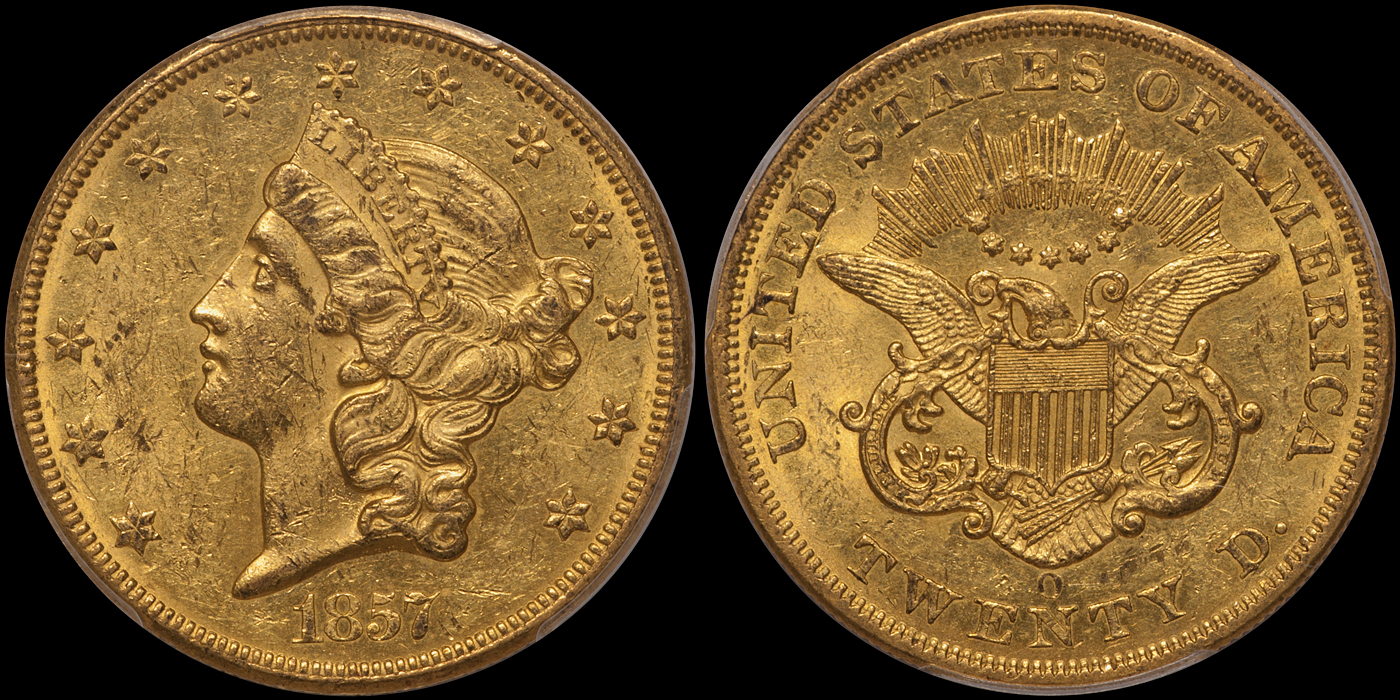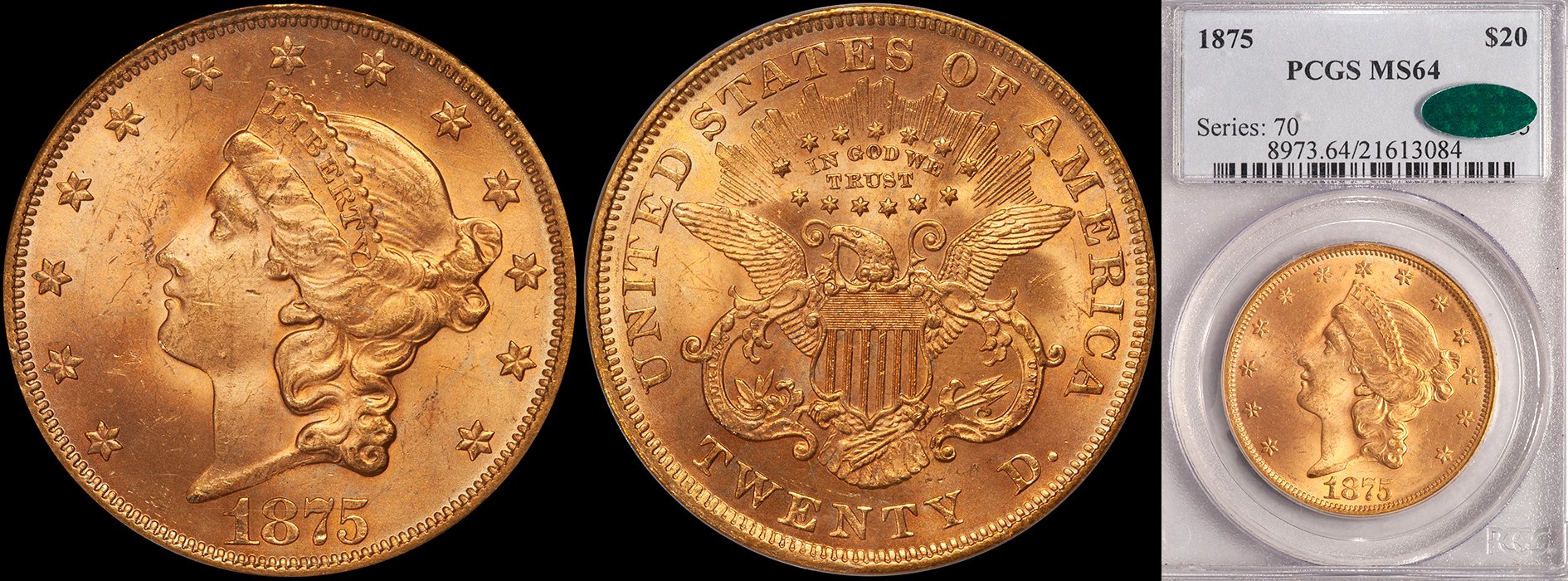One of the Coolest Hoards of US Gold Coins Ever Seen Has Entered the Market, and You (Probably) Don't Even Know About It...
/Starting around May 2018, one of the most amazing hoards of United States gold coins I have ever seen started appearing for sale. Graded by PCGS and marketed by Stack’s Bowers, this massive group—likely containing tens of thousands++ of coins—consists of eagles and double eagles dated as early as 1850 and as late as the 1920s.
Known as the Fairmont Collection, these coins derive from an overseas bank and they likely have been off the market for 75 to 125+ years.
I have paid careful attention to these coins and have learned a tremendous amount about surface preservation, natural color, and rarity. I’d like to share some of my observations with you.
When I first learned about this group, I was simultaneously excited and scared. Excited because I knew I would be able to purchase quantities of virgin original coins; the exact sort of coins that I have been championing for many years. Scared because I was unaware of quantities and wondered if some currently rare issues would be ruined by an oversupply of coins.
Given my assumption that the majority of the really good 19th century coins have already been sold, I have been able to make an extremely important determination. Most of the No Motto eagles, Type One double eagles, and Type Two double eagles that I thought were really rare are. Dates that I scoffed at as faux-rarities have proven to be the traps that I always assumed they would be.
Let me give you an example. Three Type One Liberty Head double eagles that I always regarded as rare are the 1859, 1862, and 1863.
1862 $20.00 PCGS AU50 CAC, ex Fairmont
So far, Stack’s Bowers has sold four 1859 double eagles at auction from this source with the highest graded coin an AU55. For the 1862, the number sold is also four with the highest graded an AU55. For the 1863, the number sold so far is also four with the highest graded an MS60. This, of course, doesn’t take into account coins which have been sold out of the auction arena but I’m going to assume that the total number of 1859, 1862, and 1863 double eagles is well under 10 per date; a quantity that is easily absorbed by the market.
1857-O $20.00 PCGS MS60, ex Fairmont
I wouldn’t have expected many rare date New Orleans double eagles to be in this hoard, and my hunch has proven to be correct. There have been no 1854-O, 1855-O, 1856-O, 1860-O, or 1861-O, and just a single example of the 1859-O and the 1879-O. The 1857-O has been represented by four coins sold (so far), with the finest of these grading MS60, while the 1858-O has been represented by three coins sold.
The single most expensive double eagle from this group sold to date was a PCGS/CAC AU53 1861-S Paquet Reverse which realized $96,000 as Stack’s Bowers 6/18: 195.
The quantity of the obviously common Type One double eagles in this hoard appears to be vast. As an examples, there are hundreds of nice EF and AU 1857-S (with original surfaces; a notable difference to the seawater coins seen most often). As recently as a few years ago, an EF45 1857-S double eagle was a $2,000 coin. Today, it is worth $1,500 and the coins which are available are—for the most part—exceptionally nice.
1885-CC $20.00 PCGS EF45 CAC, ex Fairmont
As I expected, there were hundreds—if not thousands—of common date Carson City double eagles in the Fairmont Hoard. These were mainly in the EF45 to AU55 range and were almost entirely dates such as 1875-CC, 1876-CC, 1882-CC, 1883-CC, 1884-CC, 1889-CC, 1890-CC, and 1892-CC. There do not appear to have been any 1870-CC double eagles in the hoard, and only small quantities of such legitimately rare dates as the 1871-CC, 1872-CC, 1878-CC, 1879-CC, and 1891-CC. Interestingly, these rare dates appear to be well-circulated. This leads me to believe that a date like the 1885-CC is scarce not only because of its low original mintage, but because of the fact that it appears to have seen more use in local commerce than a date like the 1884-CC.
Prices on many of the common date double eagles in the Fairmont Collection have dropped; some dramatically.
It is my belief that these coins, at today’s lower market-adjusted price levels, are absolutely fantastic values. In over 35 years of specializing in US gold coins, I have only seen a handful of hoard coins which were as nice as these Fairmont coins.
Typically, coins from overseas banks have dark black smudges on the high spots. I refer to this as “vault dirt” and while it doesn’t bother me, it certainly isn’t attractive and it is a turn-off to many collectors.
The Fairmont coins were stored differently and instead of getting dirty, they became nicely toned. The New Orleans coins have acquired a deep green-gold hue, the San Francisco coins show more of a reddish-gold coloration, and the Philadelphia coins have color which varies by decade with the older coins showing a darker green-gold hue while the newer coins show a lighter greenish shade.
There are thousands and thousands of No Motto eagles in this hoard but 95% of these are more common dates. I’m not aware of a single rare New Orleans eagle from this source, no Civil War issues (save for the common 1861-P), and no significant San Francisco coins. This makes sense when you consider the low mintage figures of the truly rare No Motto eagles.
To put it in the broadest terms, if a pre-1880 US gold coin has an original mintage of, say, 5,000 coins, it is almost inevitably going to be rare. Given the large number of No Motto eagles with very low mintage figures, it makes sense that these just weren’t around to export to foreign banks.
1843 $10.00 PCGS AU50
Personally, I’ve been attracted to the Philadelphia No Motto eagles from this hoard. Let me give you an example of a coin that I just sold: an 1843 graded AU50 by PCGS. I priced it at $1,350. That’s essentially double melt for a coin which is legitimately scarce (PCGS population of just 26 in this grade with 17 finer). A coin like this seems like a no-brainer to me at this price, especially given its choice, original appearance.
One last observation before signing-off. Closely examining the coins from this hoard has also taught me that many of my observations about Liberty Head gold have been more prescient than I would have thought. As an example, I’ve written that “nearly all known 1843-O eagles show conspicuous abrasions on their surfaces.” I’ve seen a lot of 1843-O eagles from this hoard and, lo and behold, they almost all are heavily abraded.
Do you have more questions about this hoard or do you want to share you observations on it? Please comment below. And make sure to contact me via email(dwn@ont.com) or by phone (214-675-9897) if you are interested in purchasing coins from this hoard.













